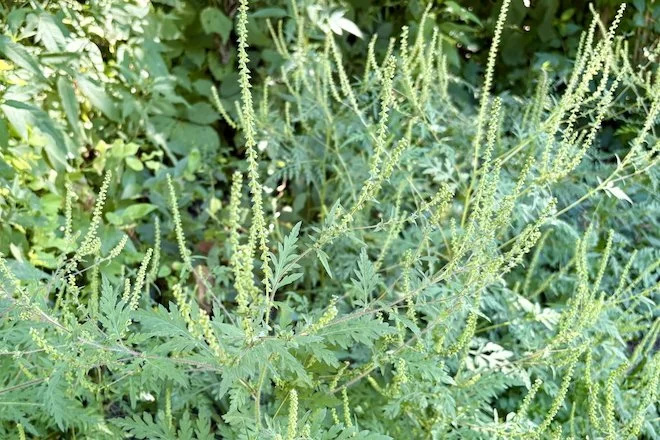This week: Ragweed and Mistaken Identity
Hello,
Welcome to Ragweed season! Sadly, Common Ragweed (Ambrosia artemisiifolia) is a native plant that can be a nuisance and is best removed. One male Ragweed plant can produce a billion pollen spores, to the aggravation of noses everywhere.

Ragweed has insignificant flowers that bloom in August and September. The flowers line two- to four-inch spikes, and its foliage resembles carrot tops. The entire plant grows to a height of two to four feet.
Because Ragweed shares the same blooming period as Goldenrod and is less visible in the landscape, the far more beneficial and beautiful Goldenrod is often falsely accused of causing all the itchy eyes and sneezes.

Is there any value to Ragweed? Beneficial insects don’t waste their time on the flowers, but birds do eat their seeds. It was used medicinally by Native Americans for many maladies, from hives to infections, and the Lakota even used its leaves as toilet paper. However, it can cause contact dermatitis, so I would not recommend trying that.
Classify this native wildflower as a weed, don your gardening gloves, and pull it.
Elsewhere:
I’ve added an online store to bloomstobees.com. This will be the home of present and future digital download guides, as well as some of my hand-bound publications and journals. Check it out!
Before You Go:
If last week’s email, ‘Making Plans for Next Year’s Garden,’ didn’t land in your inbox (Microsoft email servers put it in limbo), read it here!
Have a good week,
Julie